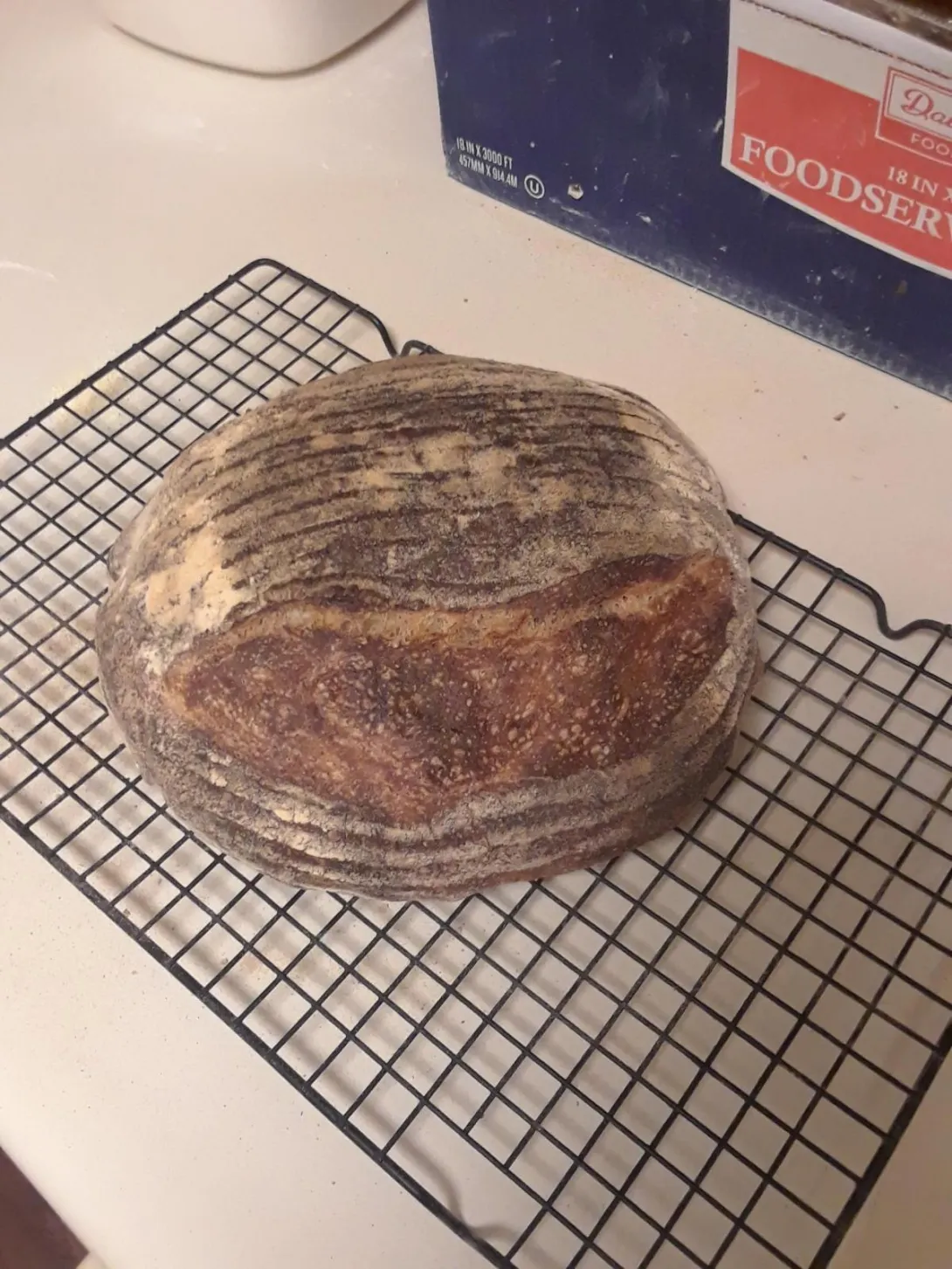
Hey bread buddies,
I've been baking for a good 2 years now, and sourdoughing for one of those. I've come along a lot since then, but one thing really evades me.
I can't get that really nice ear on my loaves. Now, I bake high hydration loaves, and whenever I try to make nice cuts, it just doesn't work out for me. Here is a pic of one of the best scores I've gotten so far. This one was a 76% hydration loaf. As you can see, I tried to score it on the side, like my online mentor Maurizio Leo does, and it pretty much stayed on the side.
So, scoremasters, any advice for a young aspiring master baker?
Thanks in advance!
Put white bread in the oven at 90% proof and whole grain ones at 86% proof. Knowing when to put bread in the oven is the hardest thing to learn about bread baking by far! Leo is great!
Interesting. By this do you mean if the recipe says 3 hour proof, do 90% of 3 hours, or are we doing this by look and feel?
Watch the dough instead when it rises the proper volume then it goes in the oven. The clock is why you are not getting great spring and bloom.
Dab, I was prepared to ask you to describe the feeling of a properly proofed dough. As I gathered my thoughts, I realized that there is no one answer. At least this is my present belief.
It seems that whole wheat is different from flour. High hydration from low. Long fermented CO2 filled dough from shorter, quick ferments. And on and on.
When it comes to optimum proof, I think experience for a particular loaf is necessary. Is this correct? Or do all doughs produce the same feel and character for optimum proof?
Dan
Another fellow Maurizio fan here. I certainly don't have vast expertise to offer here, so I'm also curious what tips you get here. Picture in my avatar was a bake from a couple years ago, and I've been wanting to get that ear back.
Recently I've changed the scoring angle, and that seems to be helping. I have been using a lame to score lately, and while it was easier than a knife, I'd be disappointed with lack of spring and ear. I have to score confidently and with the blade almost parallel to the top of the dough to get some good ear action.
A clean blade also helps, so if you're making two loaves, it will help to wipe it with a wet towel before scoring the next.
With high-hydration loaves that Maurizio shares, it can be very difficult to build up enough strength. I've been frustrated at times following his recipes, only for my dough to spread... but a high temp/humid kitchen like mine will do that. So I have to scale back water (usually 50-100g), and make sure I'm getting good shaping. If it's not strong enough to shape, it won't have enough oomph to spring back.
Lastly, I'll leave you with this post on TFL... there are lots of good tips here: http://www.thefreshloaf.com/node/30001/scoring-bread-made-highhydration-dough
Thanks. Yeah, I can reduce hydration and get good ears, but I don't like the bread as much. I emailed the man himself through his website contact page. I'll let you know what he says, because I really like the texture of the high hydration breads, and want to master actually making them look good.
in his New Mexican kitchen. The dough is the only thing that counts
Which one of those do you think is more important?
and doesn't recover with great bloom and spring in the oven then it was too wet, flour, or it was over proofed, too long or both. It is usually both. The wetter the dough the faster it is. In my 84 F kitchen I'm at least 1 hour shorter on everything than he is in his 76 F kitchen in the summer but I use LaFama AP flour too and he uses the best that that millers can give him so I can't be as wet either. So less water and much less time works best for me using his recipes but my bread looks the same in the end.
I could never let anything ferment on the counter overnight except in the dead of winter when the kitchen is 64 F. Once you learn what happens when you do things then you can modify any recipe to fit your flour and environment the best. it just takes a little time and sadly that is the only resource that is in short supply for all of us especially if you are as old as I feel:-)
I guessing a bit less water and watching the dough will work wonders for your spring and bloom. Spritz the heck out if it if you want blisters.
Happy baking the Leo way
Yes, I am going to start learning to bake by feel instead of by the numbers. I think that is the next necessary step in the bread evolution.
depends... which recipe are you following?
we're getting a bit off topic with the post. but there lots of factors at play. some of his recipes, he mills his own flour, which can lead to increase fermentation, and minimizes the time exposed to ambient conditions. he bakes every day, and his starter is used at it's peak. humidity and temp for new mexico are very stable (although he does use a temp controlled proofing box and retarder).
in my experience in TX, flour type (and it's moisture content) along with kitchen temp have the biggest effects in my dough.
He says: refrigerated dough gets better ears than warm dough. Lame needs to be sharp.